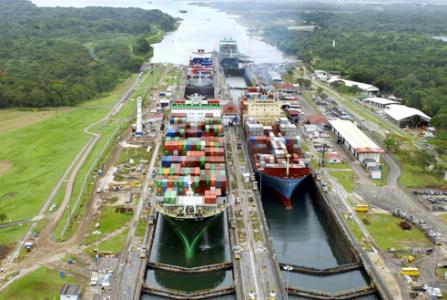(Startribune) The Panama Canal’s watershed experienced its fifth driest year of the last seven decades in 2019, officials said this week, underscoring warnings that climate change poses a major challenge to the recently expanded waterway, a major driver of the Central American nation’s economy.

Monday’s annual report from the Canal Authority said that the watershed received 84.6 inches (2,149 millimeters) of precipitation last year, about 20% below the historic average of 106.1 inches (2,695 millimeters).
Steven Paton of the Smithsonian Institution’s Tropical Research Institute told The Associated Press that since 2000, the watershed has seen the driest three-year stretch on record as well as eight of the 10 biggest storms.
That reflects a trend toward more extreme weather events.
The canal underwent a multibillion-dollar expansion with the opening of new locks in 2016 to accommodate larger, New Panamax-class ships capable of carrying far more cargo than the biggest vessels that were previously able to transit the waterway.
“With the new locks, the demand for water by the canal has grown significantly and therefore it will be even more difficult to ensure operations and, at the same time, the availability of freshwater for the people who live in the metropolitan areas of the canal,” Paton said.
The report came days after the Central American nation marked 20 years since the U.S. handover of the canal to Panamanian control and after canal administrator Ricaurte Vásquez warned of threats due to climate change.
In early 2019 authorities implemented drafting restrictions for vessels due to low water levels amid a severe dry spell, forcing large ships to cross with less below capacity cargo loads and lowering revenues.
Water levels have fallen again during the current dry season at Gatun Lake, through which ships cross on the interoceanic voyage, though experts say it is too early to tell if drafting restrictions will again be necessary this year.
Levels are also down at the smaller Alajuela Lake, the source of the freshwater for about half of Panama’s 4 million residents.
“Due to population growth in the canal region and the impact of those populations … ensuring the quality of water in the watershed is another big problem,” Paton said.
The watershed is a network of rivers and creeks covering about 1,280 square miles (3,300 square kilometers).
Canal authorities expect to finish various studies around midyear on proposals to build new reservoirs or channel water from other sources to the lakes.